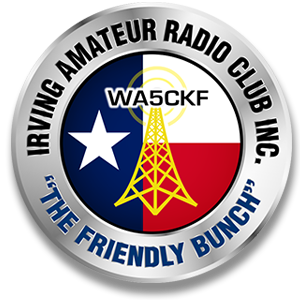📡 IARC Repeater Guidelines
For Your Awareness and Best Use
These guidelines help ensure responsible and courteous use of IARC repeaters. Following them keeps operations smooth and enjoyable for everyone.
✅ General Expectations
-
Be courteous & follow the law – Every operator is responsible for legal and respectful use.
-
Emergency traffic always comes first – Stop all communication immediately during an emergency.
🎙️ When & How to Use the Repeater
-
Scheduled nets/drills have priority over casual QSOs.
-
Listen first – make sure the frequency is clear.
-
Keep transmissions short – repeaters have a 3-minute timeout.
-
Limit long conversations – under 10 minutes during busy times.
-
Don’t interrupt unless urgent or an emergency.
-
Avoid unnecessary use – switch to simplex if possible.
📏 Radio Etiquette
-
Wait for the courtesy tone – allows others to break in.
-
Use your call sign – at the start, every 10 minutes, and at the end.
-
No “kerchunking” – ID is required by FCC rules.
-
Keep it clean & professional – remember, it’s a public space.
-
Avoid personal attacks – don’t complain about others on the air.
-
No business communications – prohibited by FCC rules.
🌟 Good Operating Habits
-
Key up, pause, then speak – ensures nothing gets cut off.
-
Be forgiving – mistakes happen, help others improve.
📖 ARRL Best Practices for Repeater Use
-
Monitor before you speak – learn how the repeater works before using it.
-
Start a contact politely – for example: “This is [your call sign] monitoring.”
-
ID properly – use your call sign every 10 minutes and at the end of a QSO.
-
Pause between transmissions – lets others break in and resets the timer.
-
Be brief and thoughtful – avoid long monologues; others may be waiting.
-
Use simplex when possible – don’t tie up the repeater if direct contact works.
-
Use only the power you need – too much power may trigger distant repeaters.
-
Don’t interrupt – wait for natural breaks unless necessary.
-
Let mobile operators have priority – especially during busy commute times.
-
Support your repeater – repeaters cost money and time; consider donating or helping.
💡 Remember
Amateur radio is a shared hobby. These guidelines keep it:
✔️ Fun
✔️ Safe
✔️ Respectful
Revised August 2025
